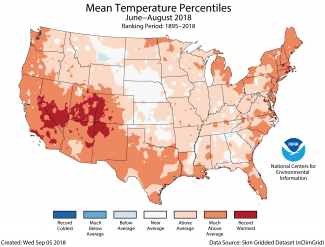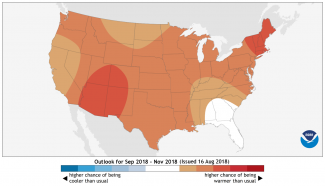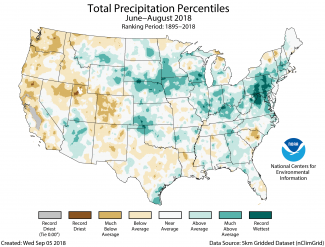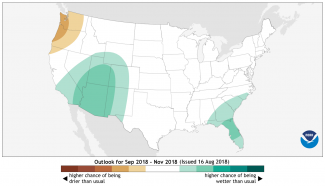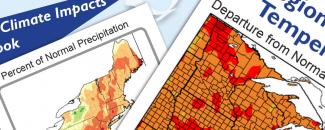
NOAA and its partners have released the latest Regional Climate Impacts and Outlooks, which recap summer conditions and provide insight into what to expect this fall.
Summer Temperature Recap
During meteorological summer (June-August), the average temperature for the Lower 48 was 73.5°F, 2.1°F above average, tying with 1934 as the fourth warmest summer on record.
Above-average summer temperatures spanned most of the Nation, with only one state having near-average June-August temperatures. Twenty-three states across the West, South and Northeast had much-above-average summer temperatures. This included Rhode Island, and Utah, which were record warm.
Fall Temperature Outlook
According to NOAA’s Climate Prediction Center, the fall outlook favors above-normal temperatures across a majority of the Lower 48, although equal chances of below-, near-, or above-normal temperatures are forecast for parts of the Southeast. The Northeast and Southwest have the highest probabilities in the contiguous United States for above-normal fall temperatures.
Summer Precipitation Recap
The summer precipitation total for the contiguous United States was 8.95 inches, 0.63 inch above average, and was the 25th wettest summer in the 124-year period of record.
Above-average precipitation was observed for many locations from the Great Plains to the East Coast, with much-above-average precipitation in parts of the Midwest and Mid-Atlantic. Pennsylvania had its wettest summer on record with 18.78 inches of precipitation, 6.56 inches above average. This surpassed the previous record of 17.78 inches in 1928.
Below-average precipitation was observed for much of the West and parts of the South. Washington State had its 11th driest summer on record receiving about half the seasonal average. Monsoonal moisture helped to boost local precipitation in parts of the Southwest, but the region overall was drier than average.
Fall Precipitation Outlook
And, according to the Climate Prediction Center, the fall outlook favors above-normal precipitation for the coastal states of the Southeast, as well as over the area extending from southern California and the desert Southwest into the Great Basin and central Rockies. However, below-normal precipitation is more likely for much of the Pacific Northwest.
Impacts and Outlooks for Your Region
Get more details for your region in the March 2018 climate impacts and outlooks summaries:
- Alaska and Northwestern Canada Region
- Great Lakes Region
- Gulf of Maine Region
- Midwest Region
- Missouri River Basin Region
- Northeast Region
- Pacific Region
- Southeast Region
- Southern Region
- Western Region
Creating These Quarterly Summaries
NOAA’s Regional Climate Services lead the production of these quarterly summaries of climate impacts and outlooks for various regions of the United States as well as parts of Canada along the border. This effort, which began in 2012, now includes as many as 10 unique regional products, all produced collaboratively with partner organizations.
You can access all of the Climate Impacts and Outlooks summaries as well as additional reports and assessments through the U.S. Drought Portal Reports web page at Drought.gov.

